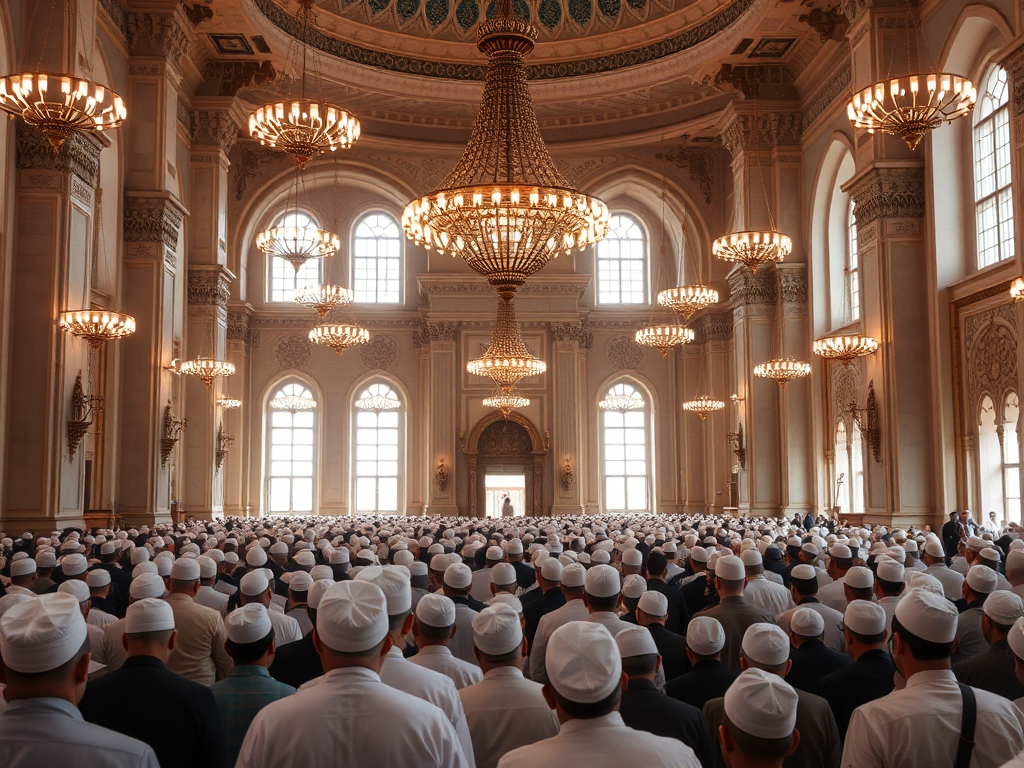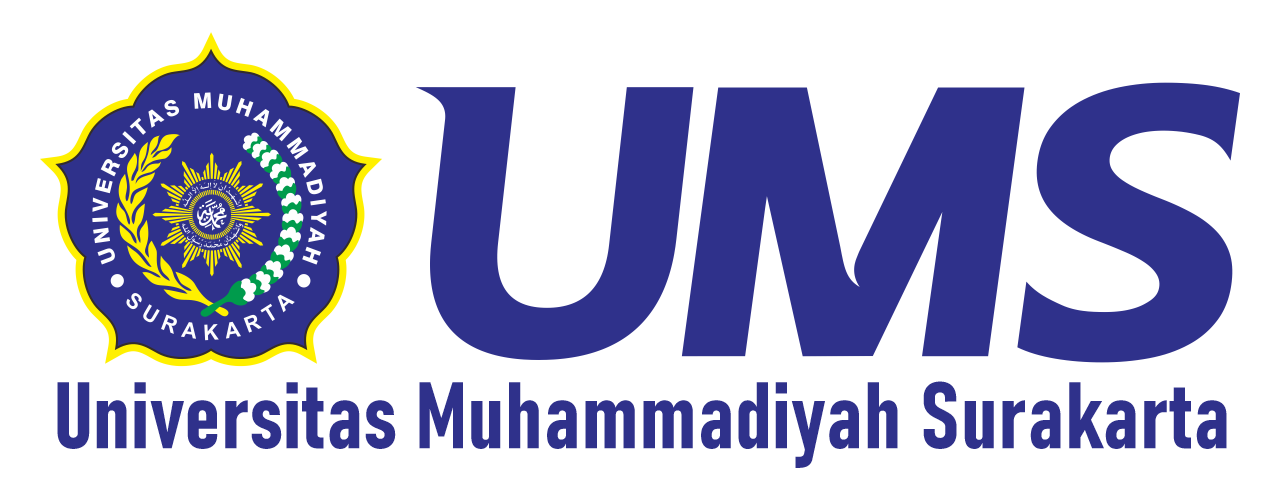The Tradition of Reciting Surah Yasin Three Times on the Night of Nisfu Sha'ban: Study of Living Qur'an at the Miftahussudur Mosque, Cibiru District, Bandung City
Keywords:
Nisfu Sya’ban, Yasin Surah, Islamic TraditionAbstract
The night of Nisfu Sha'ban is one of the glorified nights in the Hijri calendar and is considered a mustajab time to seek forgiveness and pray to improve one's spiritual relationship with Allah SWT. In various regions, especially Indonesia, it is the tradition of reciting Surah Yasin three times on the night of Nisfu Sha'ban, accompanied by special intentions and prayers aimed at longevity, mercy of sustenance, steadfastness of faith to husnul khatimah. The purpose of this study is to explain the meaning and virtue of the night of Nisfu Sha'ban based on the available evidences and the wisdom behind the tradition of reciting Yasin three times that has developed in the community. Although there is no authentic hadith to explain specifically about the tradition, it is still considered an act of wisdom, unless it is considered a religious obligation. This research also encourages Muslims to make the night of Nisfu Sha'ban a dynamic of self-reflection and cleansing of the heart.
Downloads
References
[1] D. Supardam, Pengantar Ilmu Sosial sebuah Kajian Pendekatan Struktural. Jakarta: PT Bumi Aksara, 2011.
[2] S. Hidayat and I. Khaq, “Living Quran Surat Al-’Asr To Instill Moral Values and Develop A Progressive Muhammadiyah,” Rev. Gestão Soc. e Ambient., vol. 18, no. 6, p. e05715, Mar. 2024, doi: https://doi.org/10.24857/rgsa.v18n6-010.
[3] B. U. Yakub, H. Husain, A. Nurdin, N. Nurhayati, and M. Hilmi Hidayatullah, “Living Qur’an, Gender, and Sibaliparriq, in Mandar, Indonesia: Cultural Construction in the Perspective of Islamic Law,” Samarah, vol. 7, no. 2, pp. 1119–1242, 2023, doi: https://doi.org/10.22373/sjhk.v7i2.17892.
[4] H. U. Aufar, “Makna Simbolik Tradisi Sya’banan Bagi Masyarakat Desa Benda Kecamatan Sirampog Kabupaten Brebes,” 2021.
[5] A. Mustofa, “The Living QS. Saba`: 13 among Javanese Moslem Sculptors,” J. Stud. Ilmu-ilmu al-Qur’an dan Hadis, vol. 26, no. 1, pp. 31–52, 2025, doi: https://doi.org/10.14421/qh.v26i1.5723.
[6] F. Amwar, “Tradisi Pembacaan Surat Yasin pada Malam Nisfu Sya’ban (Kajian Living Qur’an di Ma’hadut Tholabah Babakan, Tegal),” 2023.
[7] A. J. Hussain, The Living Qur’an. Chicago, IL, United States: De Gruyter, 2023. doi: https://doi.org/10.1515/9783110795011.
[8] M. D. Puspa, “Pemahaman Hadits Membaca Surat Yasin Tiga Kali Pada Ritual Malam Nisfu Sya’ban Di Kalangan GNSP (Guru Ngaji Sahate Pataruman) Desa Pataruman Kecamatan Cihampelas Kabupaten Bandung Barat,” 2020.
[9] R. Ali and S. N. Isnaini, “Digitising Interpretation: Transforming Tafsir Al-Mishbah in the Context of the Living Quran,” J. Stud. Ilmu-ilmu al-Qur’an dan Hadis, vol. 25, no. 1, pp. 1–23, 2024, doi: https://doi.org/10.14421/qh.v25i1.5186.
[10] A. Muiz and A. Gaffar, “Study Living Qur’an: The Analysis of Understanding Surah al-Nahl (125) against Demonstration-Based Communication Behavior,” in IOP Conference Series: Earth and Environmental Science, Institut Agama Islam Negeri Kendari, Jl. Sultan Qaimuddin No 17, Baruga, Sulawesi Tenggara, Kendari, 93563, Indonesia: Institute of Physics Publishing, 2018. doi: https://doi.org/10.1088/1755-1315/175/1/012180.
[11] P. Hasibuan, “Studi Living Qur’an Dalam Ritual Nisfu sya’ban Di Kampung Rawa Bogo Kecamatan Jatiasih Kota Bekasi Jawa Barat,” 2024.
[12] A. R. B. Zaman, “Living Quran in the Context of Rural Communities: A Study on the Miracle of the Quran in Gentasari, Kroya, Cilacap,” AlBayan, vol. 21, no. 2, pp. 199–216, 2023, doi: https://doi.org/10.1163/22321969-20230132.
[13] M. F. Zenrif, F. L. Nuqul, M. L. Mustofa, and A. Barizi, “RECONSTRUCTION OF SOCIAL SUFISM STUDIES: Quranic Sufism as the Basis of Internalizing Social Character and Identity,” Ulumuna, vol. 28, no. 2, pp. 620–654, 2024, doi: https://doi.org/10.20414/ujis.v28i2.1113.
[14] A. Thalib, “Pembacaan Surat Yaasiin Pada Malam Nisfu Sya’ban di Pondok Pesantren Al-Ikhsaniyah Kalipancur Semarang,” 2020.
[15] K. Yusuf, “Teori Sastra,” 2009.
[16] S. Romdona, S. S. Junista, and A. Gunawan, “Teknik Pengumpulan Data: Observasi, Wawancara, dan Kuisioner,” JISOSEPOL J. Ilmu Sos. Ekon. dan Polit., vol. 3, 2025.
[17] A. Nirwana AN, F. Arfan, F. Dolles Marshal, C. Maulana, and N. Fadli, “Methods of Qur’an Research and Quran Tafseer Research its implications for contemporary Islamic thought,” Bull. Islam. Res., vol. 2, no. 1, pp. 33–42, Jun. 2024, doi: https://doi.org/10.69526/bir.v2i1.34.
[18] A. N. AN, “Metode Riset Al-Qur’an dan Tafsir,” in Metode Riset Al-Qur’an dan Tafsir, 1st ed., M. Muthoifin, Ed., Surakarta: Muhammadiyah University Press, 2025, pp. 1–485. [Online]. Available: https://mup.ums.ac.id/shop/agama/metode-riset-al-quran-dan-tafsir/
[19] H. Basri, A. Miswar, H. Hasan, M. Pabbajah, and S. Khalik, “Inheritance Rights of Women in Makassar Society: A Study of Living Qur’an and its Implications for Islamic Law,” Samarah, vol. 6, no. 2, pp. 537–557, 2022, doi: https://doi.org/10.22373/sjhk.v6i2.13882.
[20] A. Danarta, “The Implementation of Disaster Mitigation based on Qur’anic Interpretation: Muhammadiyah Case Study,” J. Stud. Ilmu-ilmu al-Qur’an dan Hadis, vol. 23, no. 1, pp. 125–144, 2022, doi: https://doi.org/10.14421/qh.2022.2301-07.
[21] A. Purnomo, F. Mulianingsih, A. Fahry, and I. M. Setyarini, “The role of the Paguyuban Masyarakat Peduli Hutan (PMPH) community as a form of disaster management in the highlands of Kudus Regency,” in IOP Conference Series: Earth and Environmental Science, I. M.H., M. E., B. E., A. S., M. E.T.W., W. P., N. R., Y. Y., and M. A., Eds., Social Studies Program, Universitas Negeri Semarang, Indonesia: IOP Publishing Ltd, 2022. doi: https://doi.org/10.1088/1755-1315/986/1/012045.
[22] F. Hasibuan and A. Kamaluddin, “Studi Living Qur’an dalam Ritual Nisfu Sya’ban di Kampung Rawa Bogo Kecamatan Jatiasih kota Bekasi Jawa Barat,” Blantika Multidiscip. J., vol. 2, 2024.
[23] Y. Suryana, “Wawancara Pribadi dengan Yayan Suryana tentang Pelaksanaan Tradisi Pembacaan Surat Yasin Tiga Kali Pada Malam Nisfu Sya’ban.” 2025.
[24] K. Muttaqin and S. Nurhayati, “Reciting QS. Al-Ra`d and QS. Yāsīn in Phenomena of Sakarāt al-Maut in Sumenep, Madura,” J. Stud. Ilmu-ilmu al-Qur’an dan Hadis, vol. 23, no. 1, pp. 173–194, 2022, doi: https://doi.org/10.14421/qh.2022.2301-09.
[25] M. Toriquddin, N. Faizin, T. Hamidah, and A. Hamdan, “Living Qur’an, Niqab, and Islamic Law: A Study at Mambaush Sholihin Islamic Boarding School, Gresik, East Java,” Samarah, vol. 8, no. 2, pp. 934–953, 2024, doi: https://doi.org/10.22373/sjhk.v8i2.19563.
[26] A. Z. Abidin, S. Noorhidayati, and I. Ahmadi, “Amulet of Quranic Verses in East Javanese Rural: Unraveling Mystical Theology and Living Quran,” Acad. J. Interdiscip. Stud., vol. 12, no. 6, pp. 392–400, 2023, doi: https://doi.org/10.36941/ajis-2023-0177.
[27] U. Labibah, I. Taufiq, and Y. Alimi, “Living Qur’an of Pesantren Women: A Manifestation of Surat An-Nisa 34 in A Woman Leadership Role of Nyai Munjidah Wahab,” J. Stud. Ilmu-ilmu al-Qur’an dan Hadis, vol. 23, no. 1, pp. 89–110, 2022, doi: https://doi.org/10.14421/qh.2022.2301-05.
[28] I. Nurmansyah and F. H. P. Rizqy, “Tradisi Pembacaan Surah Yasin Malam Nisfu Sya’ban Di Pontianak Timur, Kalimantan Barat: Analisis Sosiologi Pengetahuan,” Shad J. Ilmu Al-Qur’an dan Tafsir, vol. 2, 2024.
[29] I. Taufiq and Z. Hassan, “Development model of social exegesis in Indonesia: Exegesis teaching studies in central java,” Man India, vol. 96, no. 6, pp. 1607–1621, 2016, [Online]. Available: https://www.scopus.com/inward/record.uri?eid=2-s2.0-84973567177&partnerID=40&md5=397181fbcfab4e3dcaf18bfc2cf9b12f
[30] M. A. Suryadilaga, Model-Model Living Hadis dalam Metodologi Penelitian Living Qur’an dan Hadis,. 2005.
[31] M. Takdir and U. Sumbulah, “UNDERSTANDING AND PRACTICE OF RELIGIOUS TOLERANCE: A Study of the Living Qur’an in Madura, Indonesia,” Ulumuna, vol. 28, no. 1, pp. 257–280, 2024, doi: https://doi.org/10.20414/ujis.v28i1.759.
[32] Syarifuddin and Rif’an, “Pemikiran Tentang Sistem dan Kelembagaan Islam di Abad 21,” Al-Risalah J. Stud. Agama dan Pemikir. Islam, pp. 1–10, 2018.
[33] A. Tholib, “Pembacaan Surat Yaasiin pada Malam Nisfu Sya’ban di Pondok Pesantren Al-Ikhsaniyah Kalipancur Semarang: Analisis Resepsi Fungsional,” 2020.
[34] Abdulrohim E-sor et al., “Islamic Communication in the 21st Century: Principles, Methods, Practices, Digital Transformation and Contemporary Applications,” Bull. Islam. Res., vol. 3, no. 4, pp. 571–594, May 2025, doi: https://doi.org/10.69526/bir.v3i4.354.
[35] H. Neliwati, N., Rizal, S., & Hemawati, “Peranan Tokoh Agama Dalam Meningkatkan Motivasi Pelaksanaan Keagamaan Masyarakat,” Geneologi PAI J. Pendidik. Agama Islam, vol. 9, pp. 32–43, 2022.
[36] “Menghilangkan Sikap Apatisme dan Pesimisme di Kalangan Kaum Muda,” Dinas Syariat Islam Aceh.
[37] Mugoya Bashir, Ndizaawa Joash Paul, Akurut Patricia Ocom, and A.-O. S. Bolatito, “The Influence of Islamic Culture on Organizational Performance in Islamic University In Uganda: A descriptive Study,” Bull. Islam. Res., vol. 3, no. 4, pp. 595–614, May 2025, doi: https://doi.org/10.69526/5pgtmm30.
[38] M. F. Nasar, “Ormas Keagamaan Benteng Keutuhan Bangsa,” Kementerian Agama RI.
[39] D. M. Saepudin and D. Rusmana, “Tradisi Menghidupkan Malam Nisf Sha’ban di Masyarakat dan Pengaruh Masyarakat Urban: Studi Living Qur’an di Masjid Miftahul Jannah RW11 Desa Sindang Pakuon, Kecamatan Cimanggung, Kabupaten Sumedang,” Diya Al-Afkar J. Stud. Al-Qur’an dan Al-Hadis, vol. 7, pp. 102–112, 2019.
[40] Afandi, “Puasa Bulan Sya’ban dan Nisfu Sya’ban: Keutamaan dan Ketentuan.”
[41] H. Mabrur, “Hadits dalam Perspektif Ormas Persis,” Misykah J. Pendidik. dan Stud. Islam, vol. 6, pp. 34–39, 2021.
[42] S. Abdullah, “Interpreting the Qur’an: Towards a Contemporary Approach, Routledge,” 2006.
[43] I. Katsir, Tafsir al-Qur’an al-‘Azhim. 2000.
[44] M. Q. Shihab, Wawasan al-Qur’an. Bandung: Mizan, 1996.
[45] P. L. Berger and T. Luckmann, The Social Construction of Reality. 1966.
[46] A. M. Ali, “Pendidikan Pesantren dan Kultural Keagamaan,” Tarbiyah, vol. 25, 2019.
[47] A. Rais, Cakrawala Islam. Mizan, 1993.
[48] H. R. Jauss, Toward an Aesthetic of Reception. Minneapolis: University of Minnesota Press, 1982.
[49] Mahfud, “Ritual Nisfu Sya’ban dan Dialektika Tradisi,” J. Ushluddin, vol. 31, 2023.
[50] Z. A. Bagir, “Islam Nusantara dan Identitas Kolektif,” Stud. Islam., vol. 22, 2015.
[51] M. A. Abdullah, Studi Agama: Normativitas atau Historisitas? 1996.

Downloads
Submitted
Accepted
Published
How to Cite
Issue
Section
License
Copyright (c) 2025 Dani Ramdani, Dyaaz Muhammad Faathier Ramadlan, dziddia ardyarahma, Ecep Ismail, Asep Abdul Muhyi

This work is licensed under a Creative Commons Attribution 4.0 International License.







